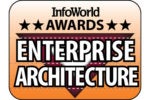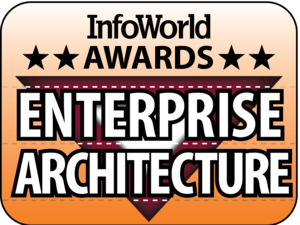The breakthrough work the team did to develop and implement its business architecture framework directly led to the creation of Proctor & Gamble's digitization program, called Going Digital, a companywide effort involving all functions and led by the shared services organization under direct guidance from the EA team. The objectives of this program are to standardize work processes and information, to eliminate non-value-added touches, and to accelerate decision making with real-time information. The EA team helps determine which processes to digitize first, leveraging metrics to assess progress and providing tools and capabilities for all digitization efforts to deliver and report results in a standardized way.
EA has also identified and aligned company leadership to focus on a few business units that will act as "digital pilots" to show the power of digitizing end-to-end. Members of the EA team are directly in charge of each pilot. Pilots are being kicked off by leveraging the business process maps of the business architecture framework.
EA now enjoys an all-time-high level of credibility and business impact, thanks in large part to the success of the Going Digital initiative. The core metrics developed in its context are part of P&G's corporate goals and appear on the Global Business Services' scorecard. Through the integration of EA with the project management office, P&G has achieved full transparency across all IT initiatives, whether they are EA-initiated or not. The EA team has demonstrated measureable results in standardization (up 10 percent) and automation (up 10 percent) and made huge strides in real-time information (up 300 percent).
USAA
Sometimes, a company simply outgrows its architecture. That's what happened at USAA, which has provided a full range of financial services including banking, insurance, retirement planning, investment services, and advice to military professionals since 1922.
USAA's membership has expanded significantly, leading to significant change in business models that has had a direct impact on its members. The EA team at USAA quickly recognized that the required changes could not be handled with a single architectural discipline, so it formed a cross-discipline, cross-organization team responsible for enabling the business to change processes, methods, and structure to align with broader member needs and newly available technologies.
USAA branded this architectural approach Unified Architecture, a customer-centric approach solely focused on meeting the needs of its members. It provides a single road map, bringing together people, process, technology, and information, rather than stand-alone process design and IT roadmaps. The approach represents all architectural disciplines, including business architecture, information architecture, IT architecture, change management, and organizational design. The focus is on delivering business design processes and methods as opposed to models and standards.
The most difficult challenge has been helping the organization, particularly its business partners, to recognize the value of the approach. As one member said, "Few organizations are ready to accept a unified architecture. It's a long road to educate the players and it needs to be done through grassroots efforts, finding champions and showing success through pilot projects that deliver value."
And it's not just the business side that has needed prodding. Another challenge has been unifying the architects themselves into a single, cohesive community and creating a metamodel and deliverables that all disciplines can agree to and benefit from. USAA is building a common repository, which will have joint ownership across disciplines and its own governance team made up of representatives from the architecture community.
The value of Unified Architecture is realized in cost savings, cost avoidance, reduction in enterprise risk, increased capabilities, reduced complexity of the business model, and increased confidence in business designs -- and it has already yielded success. Early identification of common business functions enabled project sponsors to see potential redundancies across organizational units. In one recent engagement, the UA team helped reduce program labor costs by more than a quarter of a million dollars.
As USAA moves forward with Unified Architecture, one of the vital areas of skill set investment is in visualizations. USAA's enterprise architects are taking classes and experimenting with different approaches to presenting data. At the same time, there is a continued emphasis on collecting and maintaining all architectural elements. In 2012, the goal is to automate data collection and maintenance to give the repository an added productivity boost.









